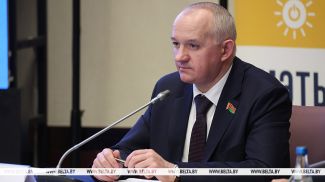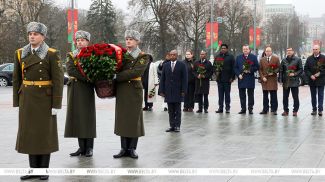
MINSK, 4 September (BelTA) - Over 260,000 people, including 56,000 foreign tourists, have visited the specially protected natural areas of Belarus this year, Belarusian First Deputy Minister of Natural Resources and Environmental Protection Aleksandr Korbut told a press conference on eco-tourism in Belarus, BelTA has learned.
The growing interest in the country’s specially protected areas has been recorded both among Belarusian and foreign tourists. The first deputy minister added that the territories with special protected status would be more involved in boosting Belarusian eco-tourism.
For this very purpose, the country’s nature reserves host various festive activities on an annual basis. The development of tourist clusters proved efficient. Aleksandr Korbut cited an example of the Sporovskiye Senokosy eco festival which takes place in the village of Vysokoye, Bereza District.
“When organizing mass events, we do not limit ourselves to ecotourism only, but involve farmsteads, locals, and, in general, the entire infrastructure available in the regions. This grows into a large-scale interaction that leads to the development of certain clusters,” the first deputy minister said.
There are 1,354 specially protected areas in Belarus today. In order to develop eco-tourism, the Ministry of Natural Resources and Environmental Protection together with the UNDP have drawn up a special map and posted it on the ministry’s website. The map gives all necessary information, including coordinates of specially protected areas, working hours, photos, videos and the opportunity to book excursions.
The growing interest in the country’s specially protected areas has been recorded both among Belarusian and foreign tourists. The first deputy minister added that the territories with special protected status would be more involved in boosting Belarusian eco-tourism.
For this very purpose, the country’s nature reserves host various festive activities on an annual basis. The development of tourist clusters proved efficient. Aleksandr Korbut cited an example of the Sporovskiye Senokosy eco festival which takes place in the village of Vysokoye, Bereza District.
“When organizing mass events, we do not limit ourselves to ecotourism only, but involve farmsteads, locals, and, in general, the entire infrastructure available in the regions. This grows into a large-scale interaction that leads to the development of certain clusters,” the first deputy minister said.
There are 1,354 specially protected areas in Belarus today. In order to develop eco-tourism, the Ministry of Natural Resources and Environmental Protection together with the UNDP have drawn up a special map and posted it on the ministry’s website. The map gives all necessary information, including coordinates of specially protected areas, working hours, photos, videos and the opportunity to book excursions.













